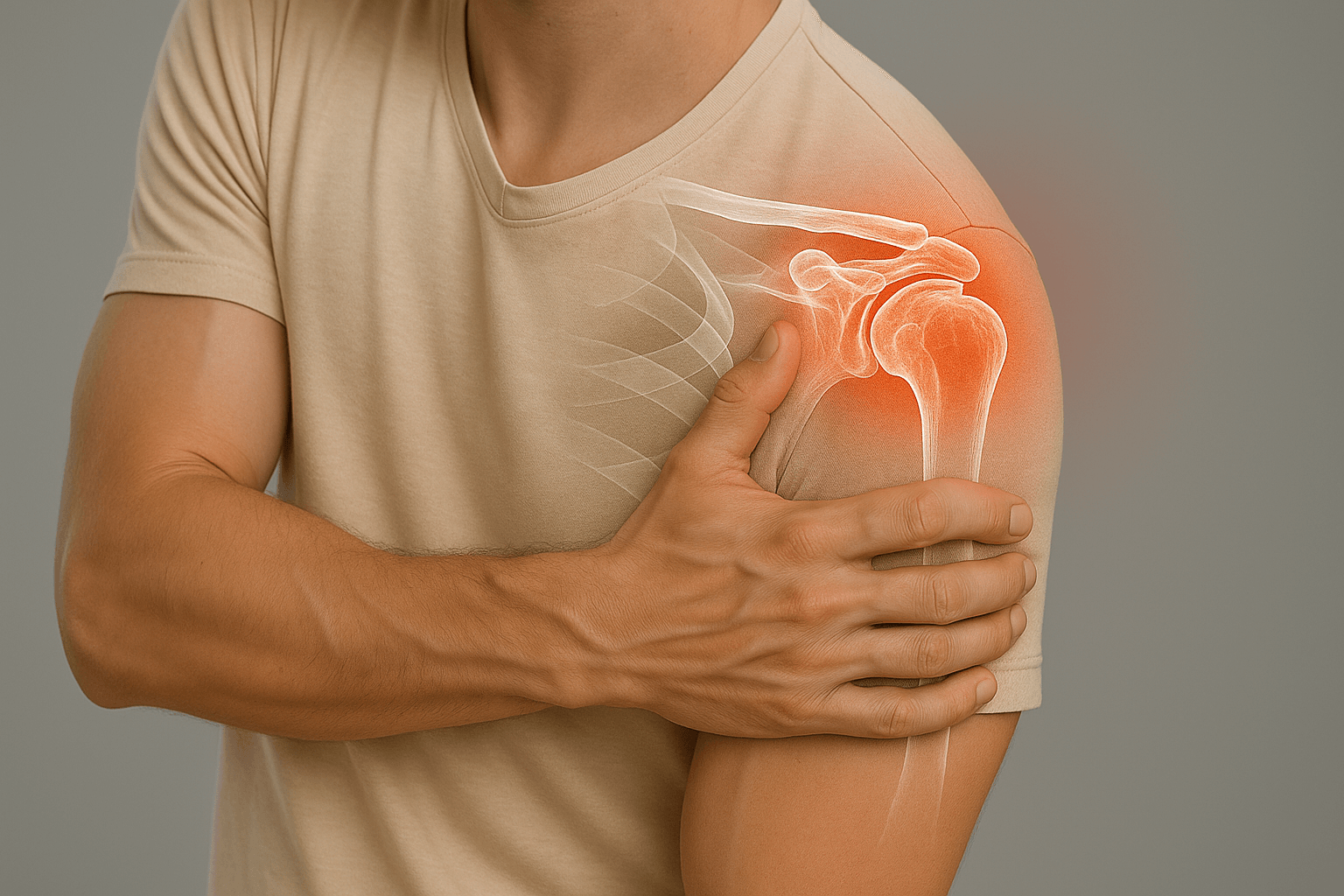Rotator Cuff
The rotator cuff corresponds to a musculo-tendinous complex that surrounds and covers the joint between the humerus and the scapula. This essential structure allows shoulder mobility but can be subject to lesions requiring specialized management.

What is the rotator cuff?
The rotator cuff corresponds to a musculo-tendinous complex that surrounds and covers the joint between the humerus and the scapula. This musculo-tendinous cap hermetically closes the glenohumeral joint in physiological conditions.
The cuff is composed of four tendons that attach to the humeral head, allowing the different movements of the shoulder and arm in all directions of space. It is thanks to it that the shoulder joint is the most mobile in the human body.
Anatomy of the four tendons
The four tendons
Subscapularis, supraspinatus, infraspinatus and teres minor form the rotator cuff
Function and physiology

The tendons of the rotator cuff allow the different movements of the shoulder and arm in all directions of space:
- Anterior elevation movements
- Lateral elevation movements (abduction)
- Internal or external rotation movements
This great mobility will also be at the origin of the fragility of these different structures and in particular of the rotator cuff.
Types of lesions
Lesion classification

Cracks and ruptures
Lesions in the axis of the fibers (cracks) or perpendicular (ruptures), partial or transfixing
Extent of lesions
Isolated
Single tendon affected (Supraspinatus in more than 80% of cases)
Multiple
Several tendons affected simultaneously, or even all simultaneously in case of complete rupture
Causes of lesions
Subacromial impingement
It is the repeated friction of the different tendons of the shoulder against the acromial bone that will cause progressive weakening of the rotator cuff. The evolution of this friction will cause a tendon lesion, which can range from superficial partial lesion to complete rupture.
Upper limb trauma
Traumatic rupture most often occurs in the context of a fall, either directly on the shoulder stump, or on the elbow or arm. Shoulder dislocations are also responsible for sometimes massive tendon lesions.
Symptoms and manifestations

Pain
They are often very important during the acute phase at the time of trauma with sensation of cracking or tearing. These pains will be constant throughout the day, without real fluctuation between day and night.
Immobilization and rest, with the arm in elbow-to-body position, best calms these painful phenomena.

Functional impairment
This is the inability to normally mobilize the affected limb. In some cases, a temporary picture of paralyzed shoulder may appear with total inability to actively mobilize the shoulder.
Lack of strength is often associated with functional impairment and may persist even after recovery of mobility.
Diagnosis and evaluation
Clinical examination
- Specific tests: Jobe test, Patte test, Belly press test, Lift off test, Bear-hug test
- Mobility assessment: Active and passive
- Strength assessment: Tests against resistance
- Pain assessment: Location and intensity
Imaging examinations

X-ray
Routine examination to evaluate bone structures and look for indirect signs

Ultrasound
Minimally invasive examination to explore tendon and muscle structures

Arthro-CT/MRI
Reference examination to confirm and assess a rotator cuff lesion
Therapeutic options
Post-operative rehabilitation

Physiotherapy is a fundamental element of functional recovery after rotator cuff repair. This physiotherapy must progressively adapt to tendon healing according to three defined phases.
Phase 1: Passive mobilization (D0 to D45)
Immobilization by abduction pillow 24h/24. Only strict passive mobilization will be performed to regain good joint flexibility.
Phase 2: Active mobilization (D45 to M3)
Active mobilization of the arm and shoulder in all directions without work against resistance. Stop immobilization by abduction pillow.
Phase 3: Progressive strengthening (M3 to M6)
Progressive work against resistance with stabilization and shoulder centering work to avoid inflammatory phenomena.
Possible complications
Infection
Bleeding/hematomas
Tendon re-rupture
Non-healing
Nerve lesions
Complex regional pain syndrome
Practical information
Hospitalization
0 to 2 days
Anesthesia
General
Immobilization
Abduction pillow 45 days
Physiotherapy
5 to 6 months
Return to sport
4 to 6 months







